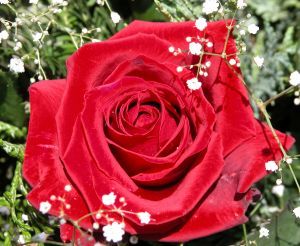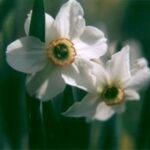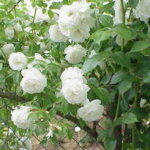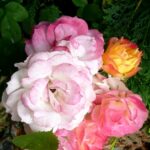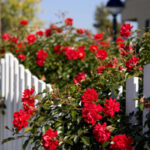Gardens are so much fun to plan. Rose gardens are especially enjoyable, with their showy fragrant blooms. With proper care, the rose bush will boom profusely and return year after year for garden enjoyment.
When planting a garden, there are no hard and fast rules. Gardeners can use whichever plants that please them to create their own, unique gardening work of art.
Roses can grow well with many other plants. The old Victorian gardening manner was to put roses by themselves. Unfortunately, the stalks and canes can look rather barren in the off season. With other plants, with foliage surrounding the rose, the roses cane can be camouflaged.
Plants with interesting textures and different shades of color in the leaves offer an interesting counterpoint to the rose. Leaves that have a fuzzy or succulent add unique texture and add interest to the garden.
When selecting companion plants, consider the color, size, shape and texture and how well these elements will fit into the overall effect of the landscape. Companion plants can fill in the spaces around the roses, while providing continuous harmony of color.
Annuals such as pansies, petunias, and marigolds can brighten any garden and can add instant color to any bare spaces.
When in doubt, there are several flowers that work particularly well as companion plants to roses. The following are some suggestions:
Baby Breath: Tiny white or pink flowers on airy plants. Baby’s Breath are a staple in bridal and rose bouquets. The effect is equally stunning in the garden.
Bellflower’s, or Canterbury Bells. Bell shaped flowers come in shades of pink, purple and white. The flowers have been a favorite in English Gardens for about 400 years.
Boxwood
Catmint: Fragrant perennial has blooms in pinks and lavenders. Perennial
Clematis: Vines with blooms in shades of purple. Clematis can be put on a trellis, or it can be allowed to wind through the roses, filling in bits of color.
Coral Bells: There are about 55 species with different colored foliage and flowers. The blooms come in sprays of airy blooms that stand up above the foliage. Perennial .
Cottage Pink
Creeping Thyme
Dalmatian Bellflower
Foxglove: Old cottage garden type plant with finger shaped flowers. Also called Digitalis.
Gaura
Germander
Hardy Geranium, Scented Geranium. The plant is not the same as the brightly colored geraniums planted as annual flowers., Scented Geraniums, also known as English Geraniums, are hardy, mounding plants with pretty, five petaled flowers and lacy foliage. The foliage is highly scented and acts as a repellent to mosquito’s and other insects. This repellent effect makes it a good companion in the rose garden.
Hollyhock Mallow. Bell shaped flowers, an old fashioned favorite.
Hyssop
Lady’s Mantle: Dainty flowers float over pleated leaves. Perennial.
Lamb’s Ears: Velvety ears with silver gray color offer interesting texture to the garden.
Larkspur: Easy to grow annual with lacy leaves in blues, violets, lavender, magenta, pink and white.
Lavender: Fragrant perennial, well known for it’s lovely scent and dainty lavender stalks of blooms. Lavender and roses are a classic combination.
Leadwort
Licorice Plant
Lily: Classic blooms with large bell shaped flowers. Fragrant blooms some in a variety of colors and sizes. Perennial.
Love-in-a-Mist: Saucer shaped flowers come in lavender, pink and white. Airy foliage.
Milky Bellflower
Santolina
Snow-in-Summer: Hardy, disease resistant plant.
Stonecrop: Hardy plants with succulent leaves and clumps of colorful flowers.
Sweet Alyssum: Tiny annual with tiny clusters of fragrant flowers in lavenders and pinks. Excellent border plant.
Thyme: Herbal plant with stems of tiny purple flowers.
Twinspur
Wooley Thyme
Wormwood
Resources:
Ortho: All About Roses, by Dr. Tommy Cairns
Burpee, The Complete Flower Gardener, by Karan Davis Cutler and Barbara W. Ellis
